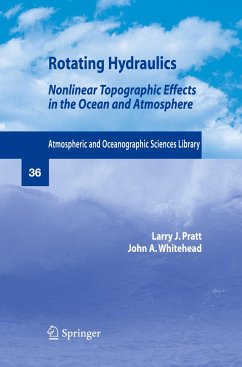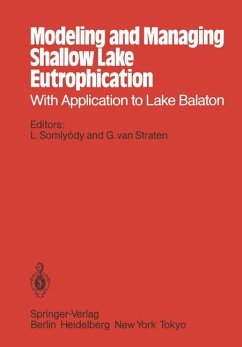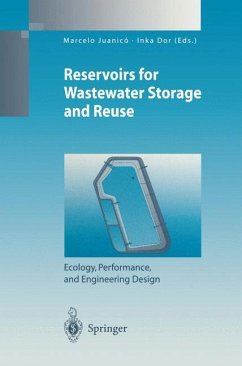
Modeling Air-Lake Interaction
Physical Background
Mitarbeit: Fedorovich, E.E.; Golosov, S.D.; Kreiman, K.D.; Mironov, D.V.; Shabalova, M.V.; Herausgegeben von Zilitinkevich, Sergei S.
Versandkostenfrei!
Versandfertig in 1-2 Wochen
77,99 €
inkl. MwSt.

PAYBACK Punkte
39 °P sammeln!
Current concern about the stability of our climatic system in light of the influx of manmade components makes the topic of this book, theoretical modeling of a microclimate, of supreme importance. Beyond an explanation of the theory of various air-lake interactions, the author provides instructions for convenient numerical parametrizations. Five major subjects are covered: (1) the atmospheric planetary boundary layer (PBL), (2) energy transfer at the air-water interface, (3) wind-induced drift of surface films, (4) thermal regime and mixing conditions in lakes, and (5) the thermal bar. The author, S.S. Zilitinkevich, is a well-respected Soviet scientist, very much in demand as a guest at western meteorological institutes. This is his first book in English. Modeling Air-Lake Interaction is intended for students and researchers in climatology and its subdisciplines.
Out of the multitude of physical processes whose mechanisms depend on the interaction between the atmosphere and a lake, only those have been selected for discussion in this book which are inevitable in the mathematical modeling of lake hydrology and the microclimates, i.e., the meteorological regime over lakes and surrounding land. There are many reasons for a combined consideration of tile hydrological and meteorological aspects. First of all, they are essentially similar from a fluid mechanical point of view. Thus, the same phenomenon, viz., the turbulent plan etary boundary layer, is represented in lakes as the upper well-mixed water layer and in the atmosphere as the lower air layer directly influenced by thermal and dynamical action of the underlying surface. Processes at the air/water interface are equally important in energy transfer in both media. And finally, dynamical and thermal interaction between the adjoining atmospheric and lacustrine bound ary layers appears to be even stronger than between the upper and deep-water layers of a lake.














